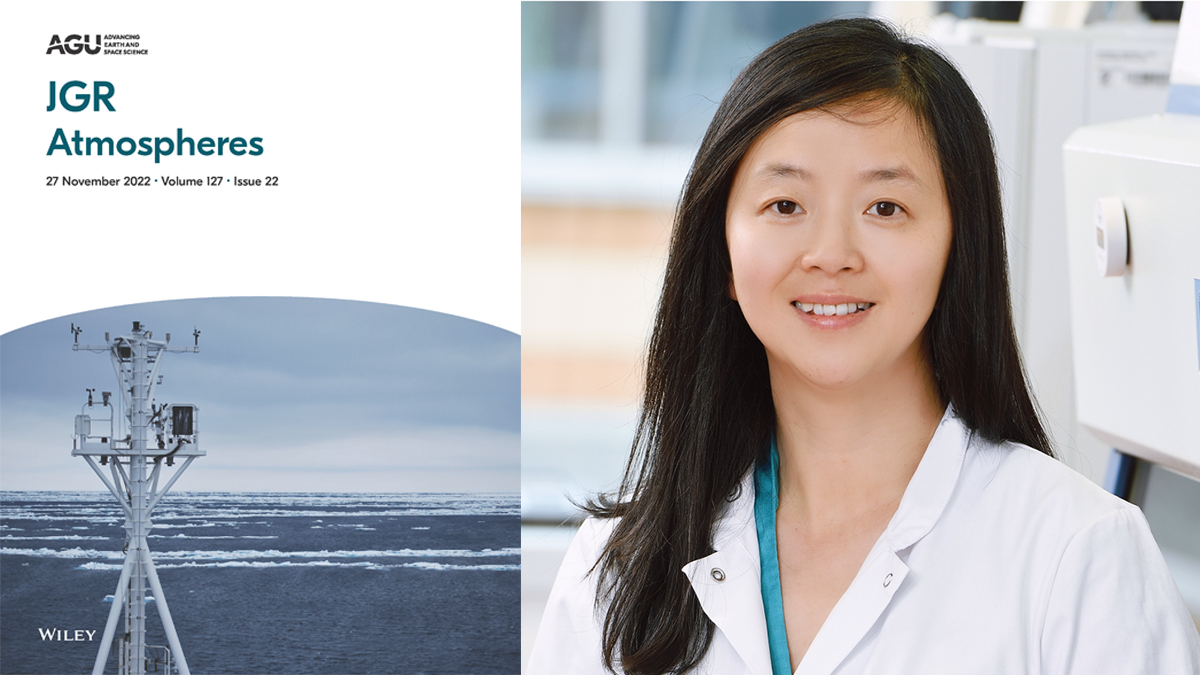Editors’ Vox is a blog from AGU’s Publications Department.
We are delighted to announce that Yafang Cheng has taken over as Editor in Chief of Journal of Geophysical Research: Atmospheres. We asked Yafang some questions about her own research interests and her vision for the journal.
What are your own areas of scientific interest?
My main interest is the chemistry and physics of atmospheric aerosols and their impact on the Earth’s energy balance, hydrological cycle, and atmospheric circulation. I combine laboratory and field experiments, scientific instrument development, and numerical model simulations to gain a fundamental and comprehensive understanding of aerosol processes and physicochemical interactions from molecular to global scales.
During my Ph.D. about 17 years ago, I was deeply interested in the climate impact of black carbon aerosols that are among the most important short-lived climate warming agents. I designed a closure study combining models and field observations to retrieve the mixing state of black carbon, a key parameter determining its climate impact, which also lead to my first publication in JGR: Atmospheres. Currently, my group is performing global aircraft measurements and model simulations for a better understanding of global climatology of black carbon aerosols. Besides its climate impact, aerosols and related haze pollution are among the leading health risks worldwide. My group has worked intensively on understanding the formation mechanisms of haze and secondary aerosols in the atmosphere. The goal is to achieve a predictive understanding of the origins, interactions, and impact of aerosols in the Earth system, and to support science-oriented pollution control and climate mitigation.
What does it mean to you to serve as Editor in Chief of JGR: Atmospheres?
JGR: Atmospheres is a legacy journal where many scientists in our field including myself have our first paper published. Being Editor in Chief is a great honor but it is also a lot of responsibility to serve the community in this way. Minghua Zhang and other former editors have done such excellent work to maintain the high quality and impact of the journal. I will learn from their experience and work with the editorial team to keep JGR: Atmospheres a top journal for the atmospheric sciences.
How do you plan to take the journal forward in the coming years?
First, I want to increase the impact of the journal. I will take more proactive measures to encourage high quality submissions. Special collections are a good way to attract submissions. Besides encouraging the community to propose new special collections, the editorial team and I will also consider opening new collections to solicit high quality publications from leading research groups or on emerging research topics. I also want to increase the visibility our papers, for example, by supporting the design of selected cover art, advertising the availability of preprint of papers that are in peer-review, and publishing Editors’ Highlights in Eos, AGU’s science news magazine.
Second, I will explore the opportunities to improve the AGU’s manuscript submission system (GEMS). For example, enhancing the search engine with machine learning techniques may greatly improve the accuracy and reduce the time spent searching for reviewers.
Finally, I want to enhance the diversity, equity, and inclusion of the journal. Currently a large portion of the submissions are from the North America and China, but we hope to have more submissions from other countries and regions. The number of submissions from some regions, such as Africa, is currently very low. My suggestion to the editors is that, for such submissions, we try our best to seek help from reviewers, editors and associate editors to provide comprehensive and constructive comments and suggestions so that, no matter whether the paper is eventually accepted or rejected, scientists from underrepresented countries and regions will still benefit from this process and feel encouraged to stay and publish with us. I will also try to recruit more female scientists to join the editorial team.
The fast changes to the landscape of scientific publication is a big challenge. Together with my editorial team, we will try our best to take the journal forward in the coming years.
—Yafang Cheng ([email protected]), Max Planck Institute for Chemistry, Germany

